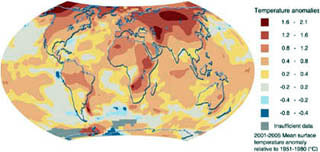Course Description
This course examines the interconnections of international politics and climate change. Beginning with an analysis of the strategic and environmental legacies of the 20th Century, it explores the politicization of the natural environment, the role of science in this process, and the gradual shifts in political concerns …
This course examines the interconnections of international politics and climate change. Beginning with an analysis of the strategic and environmental legacies of the 20th Century, it explores the politicization of the natural environment, the role of science in this process, and the gradual shifts in political concerns to incorporate “nature”. Two general thrusts of climate-politics connections are pursued, namely those related to (a) conflict – focusing on threats to security due to environmental dislocations and (b) cooperation – focusing on the politics of international treaties that have contributed to emergent processes for global accord in response to evidence of climate change. The course concludes by addressing the question of: “What Next?”
Course Info
Learning Resource Types
grading
Exams
assignment
Written Assignments

Increases in annual temperatures for the five-year period 2001-2005, relative to 1951-1980. A full resolution image for may be downloaded from UNEP/GRID-Arendal. (Image courtesy of Hugo Ahlenius, UNEP/GRID-Arendal. Data courtesy of Hansen, J., M. Sato, R. Ruedy, K. Lo, D. W. Lea, and M. Medina-Elizade. “Global Temperature Change.” Proc Natl Acad Sci 103 (2006): 14288-14293.)








